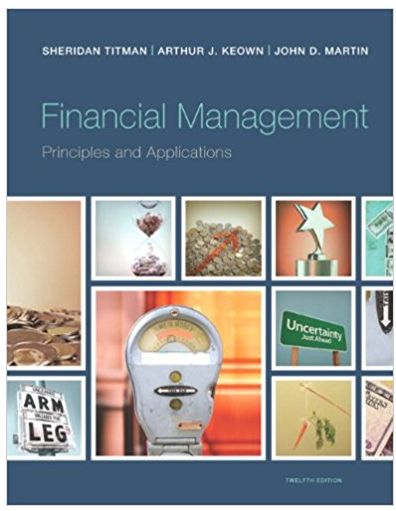Question
6) Four years ago you brought a 10 percent, 10-year bond that paid interest annually. However, this bond was callable at the end of Year
6) Four years ago you brought a 10 percent, 10-year bond that paid interest annually. However, this bond was callable at the end of Year 5 at a price of $1,200. If the current price is $1,050, what is the bonds yield-to-call at the present time?
A. 14.74%
B. 18.35%
C. 26.19%
D. 23.81%
7) You are comparing two callable bonds that are exactly the same, however one of them has a higher call premium. This bond is more likely
A. to have a higher value.
B. to be called early.
C. to have a lower yield-to-maturity.
D. to decrease in value when interest rates go down.
8) Maturity matching refers to issuing new bonds
A. that have the same maturity as the currently outstanding bonds.
B. that have the same maturity as the life of the asset being purchased with the proceeds of the bonds.
C. that have the same maturity as the average of currently outstanding government bonds with similar risk.
D. that have a Time-to-Call similar to the Time-to-Maturity.
9) The fact that the interest payments on corporate bonds are made semi-annual means that its cost of capital is higher on an annual basis.
True/False
10) If the yield curve is flat, it is more costly to borrow using long-term bonds vis--vis short term bonds.
True/False
Step by Step Solution
There are 3 Steps involved in it
Step: 1

Get Instant Access to Expert-Tailored Solutions
See step-by-step solutions with expert insights and AI powered tools for academic success
Step: 2

Step: 3

Ace Your Homework with AI
Get the answers you need in no time with our AI-driven, step-by-step assistance
Get Started


